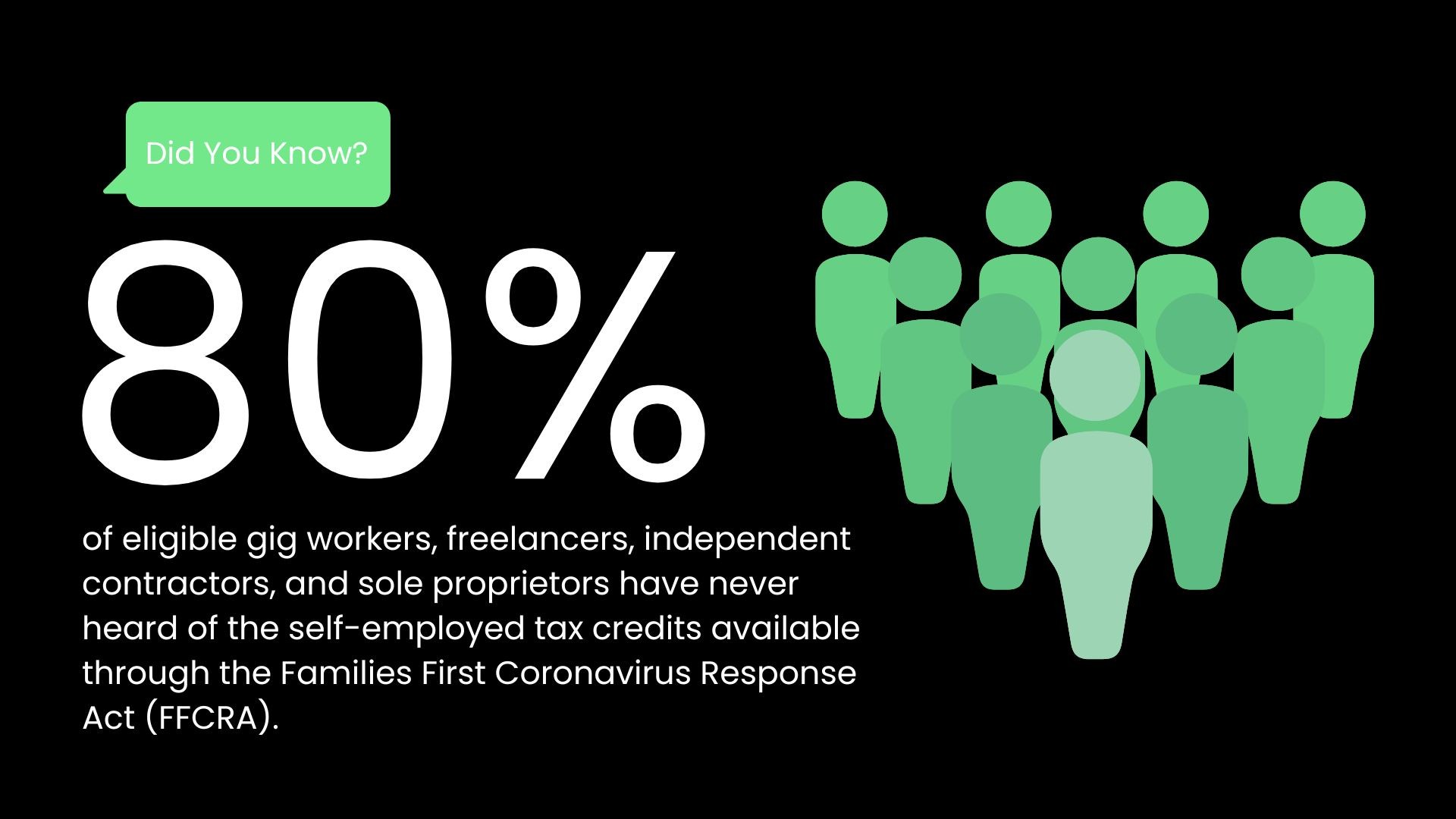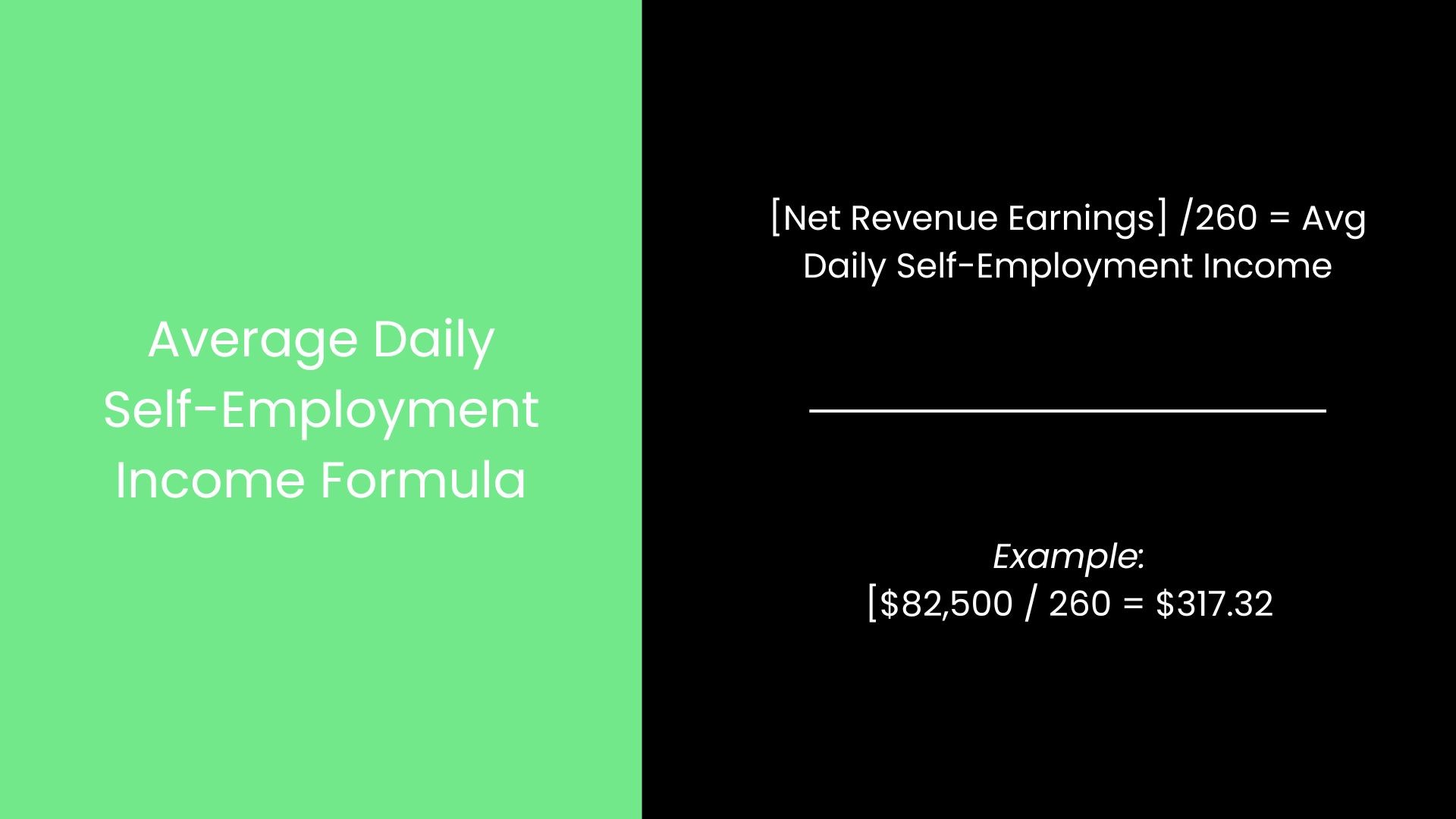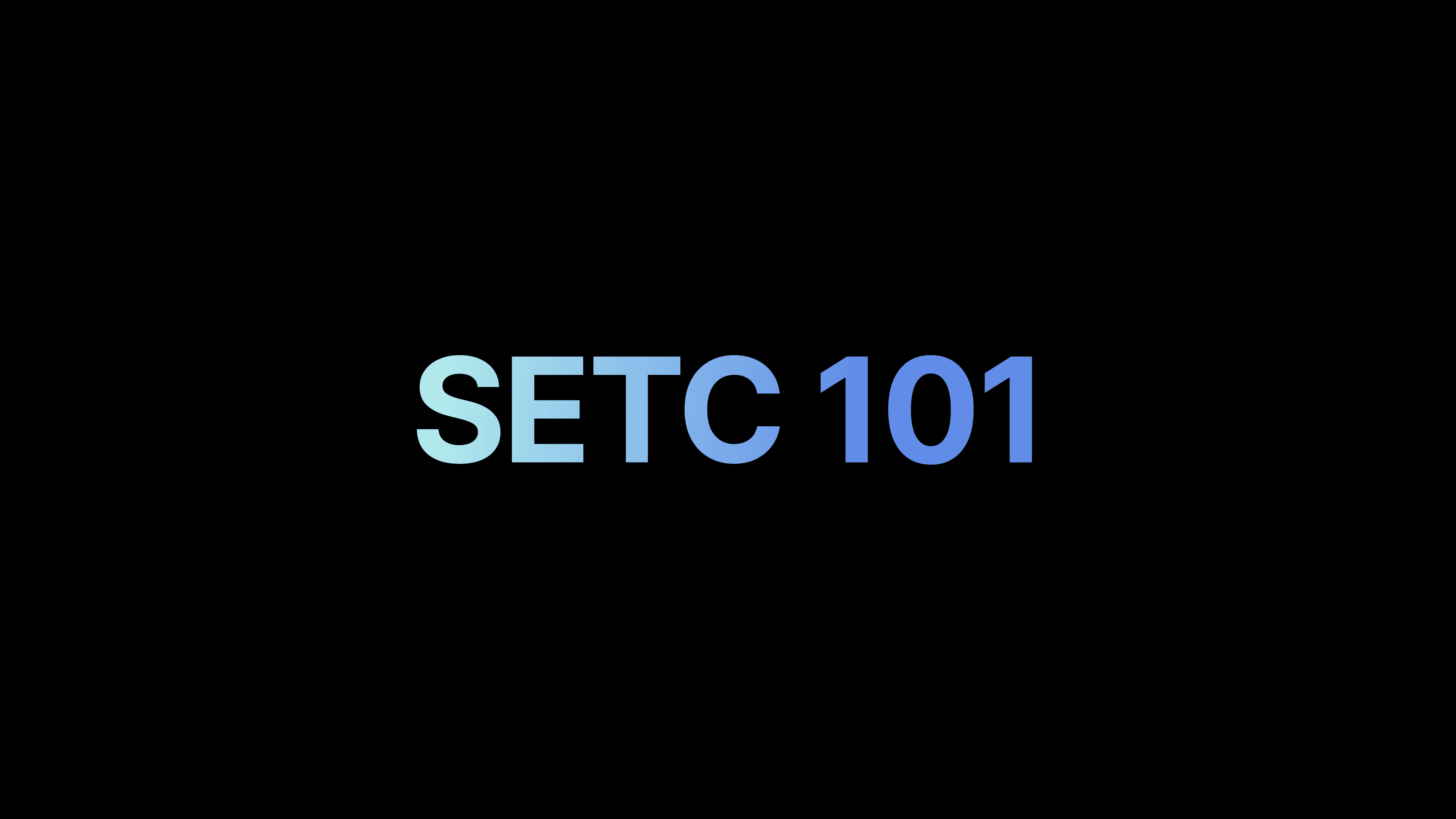SETC is a tax credit established to support self-employed individuals facing financial hardship due to COVID-19. It is part of the CARES Act and FFCRA programs that brought stimulus checks, EIDL Grants, Paycheck Protection Program Loans and Employee Retention Credits. SETC however is completely different than all of those other stimulus programs and is specifically for self-employed and 1099 individuals.
Despite the fact that over 50million people qualify for SETC refunds and the fact that the funds have already been set aside by Congress, less than 10% of people are even aware that this is available. The rest of this page is set up as a educational resource to give you the raw and real info on the FFCRA Self-Employed Tax Credit (better known as SETC).
Understanding the FFCRA Self-Employed Tax Credit
What It Is: The FFCRA (SETC) Tax Credit is designed to support self-employed individuals and small business owners by offering refundable tax credits (in the form of a cash refund). These credits are meant to compensate for the sick leave and family leave wages that you, as a self-employed individual, would have earned if not for certain COVID-19-related circumstances.
How It Works: If you're eligible, you can claim this refund by filing an amendment to your 2020 and/or 2021 taxes. The refund amount you can claim depends on specific factors like the reason for the leave and your average daily self-employment income. Essentially, it provides a way to recoup some of the income lost due to pandemic-related work interruptions.
Is The Self-Employed Tax Credit (SETC) part of the FFCRA?
The Self-Employed Tax Credit (SETC) refers to the sick leave and family leave tax credit provisions for self-employed individuals introduced under the FFCRA. The SETC allows qualified self-employed workers to recover up to $32,220 for 2020 and 2021.
A more technical explanation…
The Families First Coronavirus Response Act (FFCRA) was signed into law on March 18, 2020, in response to the challenges brought forth by the COVID-19 pandemic. The FFCRA introduced relief for self-employed taxpayers who could not work or telework due to COVID-19 between April 1, 2020, and December 31, 2020, in the form of refundable sick leave and family leave tax credits. The FFCRA established the foundation for determining who is eligible and how the tax credits are calculated.
The Consolidated Appropriations Act (CAA) extended the 2020 tax credit period from December 31, 2020, to March 31, 2021. The American Rescue Plan (ARP) Act then introduced the 2021 tax period beginning April 1, 2021, and ending September 30, 2021.
The following chart shows the relevant laws and their pertinent dates. Its important to note, that the "eligibility period" refers to the dates covered in which you were affected, NOT the date the refund for these laws expire. The expiration of the SETC refund is April of 2025 so there is still time to claim yours.

Why You Might Not Have Heard About It
Due to initial legislative oversights and lack of media coverage, the FFCRA and its benefits have flown under the radar for many self-employed individuals. However, amendments to the CARES Act have expanded coverage to include gig workers, freelancers, independent contractors, and other self-employed persons.
Common Misconceptions
Eligibility: Not for traditional employees; SETC is specifically for self-employed individuals and 1099/independent contractors and gig workers.
Audit Risk: Proper documentation and accurate claim filing won’t increase audit risk. (SETCCredit.org handles this process for you)
Other COVID Programs: SETC is separate from all other COVID stimulus programs and even if you received funds from one of these other programs, you are still eligible for the SETC funds.
Already Filed 20/21 Taxes: If you've already filed your 2020 and 2021 taxes, this is a good thing. it actually makes the refund process easier and significantly faster.

Eligibility Criteria:
Identify as a self-employed individual (e.g.,1099 contractors, sole proprietors, freelancers, independent contractors, and gig workers). See examples below.
E-commerce store owners, Accountants and Bookkeepers, Airbnb Hosts, Amazon Resellers, Copywriters, Construction Workers, Consultants, Dentists, Graphic Designers, General Practitioners, Personal Trainers, Photographers, Rideshare and Delivery Drivers, Real Estate Agents, Mortgage Professionals, Social Media Marketers, Veterinarians, Website Designers and Developers, Door to Door Rep, and many more.
Was self-employed with a business active during the eligibility period. (2020 0r 2021)
Have experienced a loss of income due to COVID-19-related reasons, such as quarantine, caring for a dependent, school closures, childcare or due to health conditions linked to COVID-19.
Have filed a federal tax return for 2020 and/or 2021.
How Are Refunds Calculated?
Tax credits (refunds) provided under the FFCRA for self-employed individuals are calculated based on the combination of "qualified sick leave" and "family leave" days. See below for details (Use our SETC calculator )
Qualified Sick Leave Equivalent Amount
The qualified sick leave equivalent amount applies to self-employed individuals who are unable to work or telework due to:
being subject to a federal, state, or local quarantine or isolation order due to COVID-19,
being advised by a healthcare provider to self-quarantine due to COVID-19, or
experiencing COVID-19-related symptoms and seeking a medical diagnosis.
Under the Emergency Paid Sick Leave Act (EPSLA) provision of the FFCRA, individuals may claim the lesser of $511 per day or 100% of their average daily self-employment income per day. A total of 20 days may be considered: 10 days for the period between April 1, 2020, and March 31, 2021, and 10 days for the period between April 1, 2021, and September 30, 2021.

Qualified Family Leave Equivalent Amount
The qualified family leave equivalent amount applies to self-employed individuals who are unable to work or telework due to:
caring for an individual who is subject to a quarantine or isolation order related to COVID-19, or
caring for a child if their school is closed or a childcare provider is unavailable due to COVID-19.
Under the expanded Family and Medical Leave Act (FMLA) provision of the FFCRA, individuals may claim the lesser of $200 per day or 67% of their average daily self-employment income per day. A total of 110 days may be considered: 50 days for the period between April 1, 2020, and March 31, 2021, and 60 days for the period between April 1, 2021, and September 30, 2021.

Click here to use our calculator to estimate your SETC Refund.
Are There Any Limitations to the SETC?
Yes, in addition to the eligibility criteria, there are a few limitations of the SETC to be aware of.
You will not receive the full SETC amount if you already received wages from an employer for sick or family leave in 2020 or 2021. Your SETC portion will be reduced by the wages you received.
You will not receive the full SETC amount if you received unemployment benefits in 2020 or 2021. Your SETC calculation must exclude these days.
You must be a U.S. citizen, permanent resident, or qualifying resident alien.
NOTE: These are not disqualifiers, even with one or more of these limitations, you can still receive the SETC Refund, it just means you might have a reduction in the amount you receive.
How Do I Apply for the SETC?
You can do the DIY process if you are familiar with tax return amendments, but SETCCredit.org's self-service platform is the easiest, fastest, and most secure way for individuals to apply for the SETC. In Fact SETCCredit.org has helped thousands of individuals claim over $400 million in refunds and 8 out of every 10 SETC refunds received by the IRS were processed by SETCCredit.org. And with SETCCredit.org's partnership with the US Treasury refunds processed by us are received within 15 to 20 days instead of the normal 5 month industry standard.
Here's The SETCCredit.org's Refund Process
Confirm Your Eligibility for the SETC. Create your secure account on our GigWorker partner site and take the pre-qualification survey to determine your eligibility and calculate your estimated SETC amount.
Gather Your Tax Statements and Identification. you will need to upload a copy of your 2020 and 2021 tax statements and a copy of your driver’s license or passport.
Complete Your SETC Application. Answer the questions provided, upload your ID, sign a few documents, and select your preferred payment method for the processing fee.
Await Your Check or Direct Deposit (ACH). The IRS will process your claim and issue a refund via check or direct deposit (ACH) based on your preferences. (direct deposits are received within 15-20 days)
Click Here To Get Your SETC Refund Today.
A Valuable Opportunity for Self-Employed Workers
The FFCRA’s self-employed tax credit is a valuable opportunity for freelancers, gig workers, independent contractors, and sole proprietors who were unable to take advantage of other COVID relief programs like the Paycheck Protection Program (PPP), Economic Injury Disaster Loan (EIDL), or Employee Retention Credit (ERC). SETCCredit.org is proud to offer a self-service platform that ensures your calculations are done correctly, and all the necessary documentation to support your claim is included. However, these tax credits will only be available for a limited time! Do not wait to find out if you qualify.










